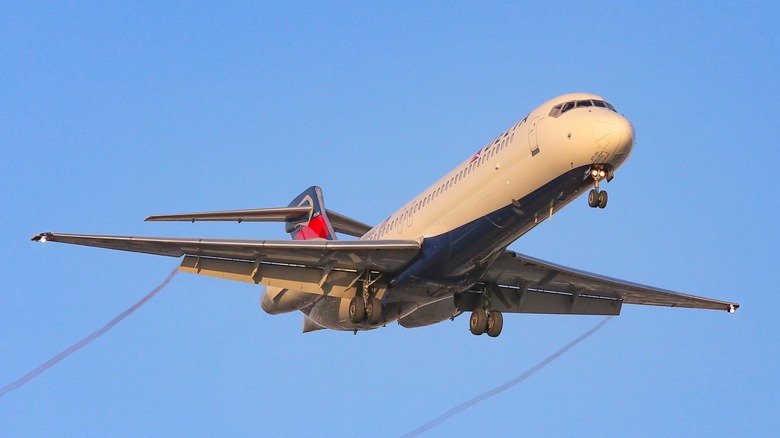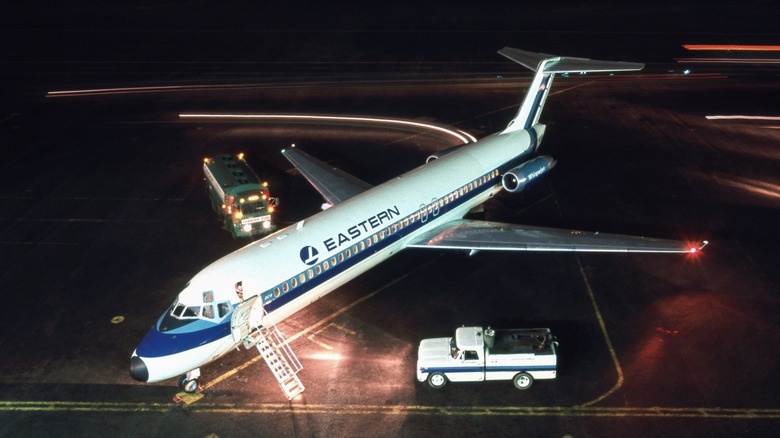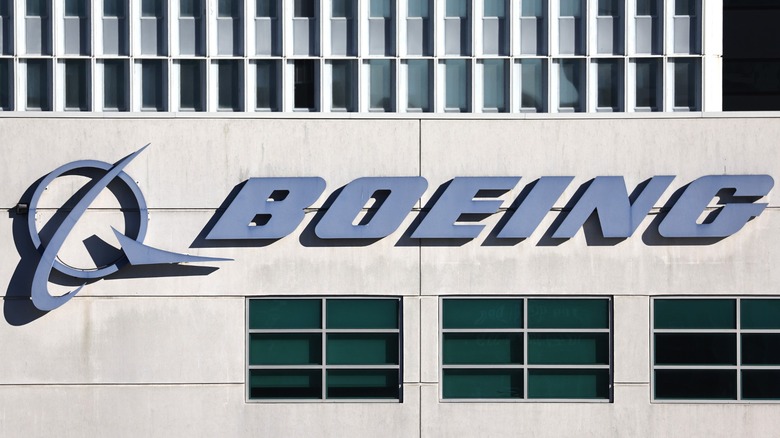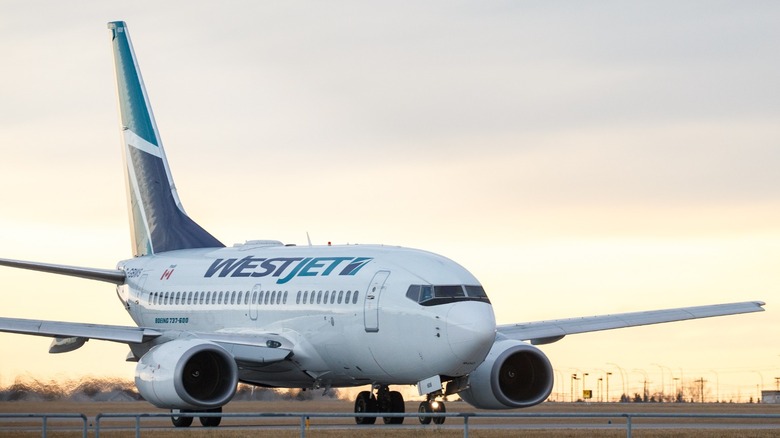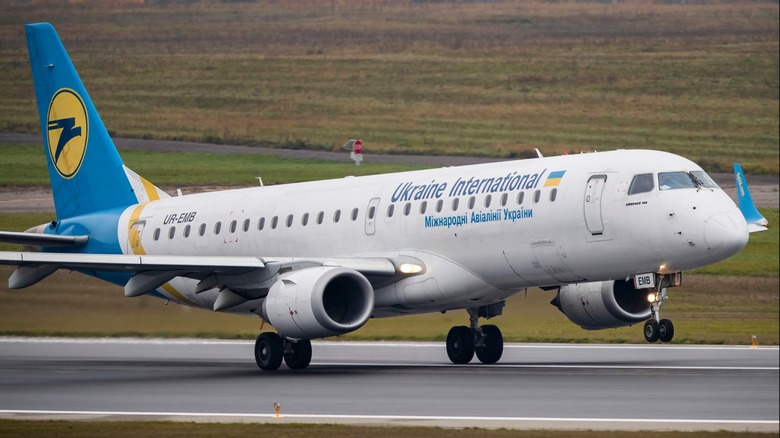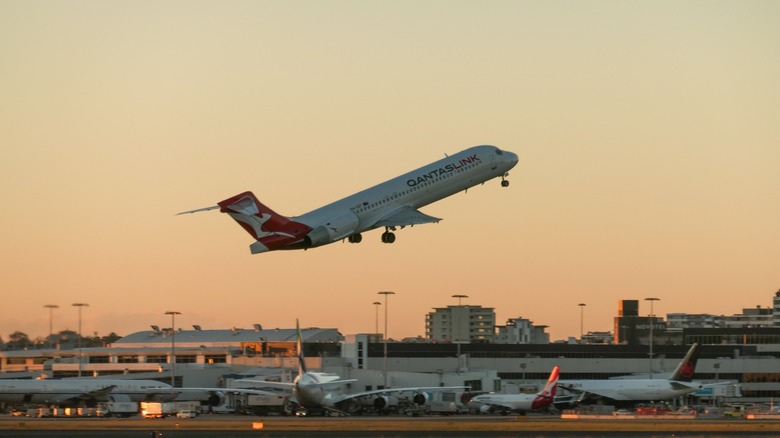Everything You Need To Know About The Boeing 717 (And Its Connection To The DC-9)
For most people, the smallest Boeing aircraft they've encountered is the 737. But did you know that Boeing once made an aircraft even smaller than the smallest 737 MAX 7 variant and had about the same number of seats as the 737-600? It's called the 717.
This aircraft also varied from the usual Boeing design where its engines hung under the wings. Instead, it had a T-tail configuration, with the two engines mounted directly on the fuselage at the back of the plane. This design is reminiscent of the older Boeing 727, built from 1962 to 1984, which had three engines at the back.
However, despite carrying the Boeing name, the 717 wasn't originally a Boeing product. Instead, this unique aircraft was the product of three companies and was made during a time of change. Nevertheless, the Boeing 717 became a great jet for its operators, with a few still operating them decades after they first flew.
Replacing the DC-9-10
The DC-9 was a small popular regional airliner, initially made by Douglas in 1965, and then by McDonnell Douglas when the two companies merged. Over 1,000 DC-9 airframes were ordered by several airlines, with 976 eventually delivered. The company stopped making the DC-9 in 1982, when it was replaced by the MD-80. Then it introduced the MD-90 in 1995 as a successor to both jets.
However, both the MD-80 and MD-90 family of jets seated between 139 and 172 passengers in a single-class configuration. While this is particularly useful for regional routes, these jets were too large on flights that had less passenger demand.
So, McDonnell Douglas created the smaller MD-95, which seats 106 passengers in a two-class configuration. This model would have similar dimensions to the DC-9-30, which was slightly larger than base DC-9-10 and was the most post popular variant in the DC-9 family. Of course, the MD-95 would feature more efficient modern engines and an updated cockpit layout, making it an easy replacement for current DC-9 operators.
It was a product of mergers
While McDonnell Douglas was developing the MD-95, it was also going through an acquisition by Boeing. The latter bought McDonnell Douglas because it wanted to increase its defense and space industry market share, while the former wanted to merge with Boeing because of its successful commercial aviation programs.
The merger was finished in 1997, with Boeing dropping all McDonnell Douglas commercial passenger jets, except for the MD-95 (which was renamed as the Boeing 717) and the MD-11 Freighter. It made sense for the former to stop producing the MD-80, MD-90, and MD-11 passenger jets, especially as these the first two directly competed with the Boeing 737 family, while the MD-11 competed against the 777.
Since Boeing did not have a jet with similar specifications to the MD-95, the company retained it as part of its product line. However, the company renamed the McDonell Douglas airliner to the Boeing 717. The small passenger jet fit nicely in Boeing's naming scheme, as it only had the 707, 727, 737, 747, 757, 767, and 777 passenger jets at this time, allowing the MD-95 to slot in nicely between Boeing's first passenger quad-jet and its smaller T-tail trijet.
The 717 vs. the 737-600
The 717 was Boeing's smallest offering from the time of its merger with McDonnell Douglas until 2005. So, how does it compare to the smallest variant of the 737 in production? The 717-200 could seat 106 passengers in a typical two-class configuration, but you could push the airliner to its limits to 117 seats by going with an all-economy setup. It also had a 1,400 nautical mile range, which meant it could go from Chicago to Miami in a single hop.
On the other hand, the smallest 737 New Generation variant, the 737-600, could seat 108 passengers, with 100 economy and 8 first class seats. Alternatively, you could fit a maximum of 130 people on the plane with a single-class configuration. This aircraft has a range of 3,050 nautical miles, allowing it to travel much further than the 717.
So, even though the 717 and the 737-600 were close in seating capacity, the 737-600 had a much further range. Another big difference between the two airliners were their prices: the 717 cost $33 million brand new in 1999, while the 737-600 was much more expensive at $59.4 million in 2011 or $44 million when converted to 1999 prices.
Competition came from Embraer and Bombardier
Despite the 717's lower price compared to the 737, the small airliner faced stiff competition from Bombardier's CRJ family and Embraer's E-Jets line. That's because these jets are even smaller than the 717, which many regional operators found appealing, especially during the post-9/11 downturn in air travel.
The final straw for the 717 was when Air Canada replaced its aging DC-9 fleet with 15 CRJ200s, 30 CRJ700s, and 45 Embraer EMB-190s. So, Boeing decided to stop taking orders for the 717 in 2003 and completely shuttered the production line in 2005 after building the last plane for AirTran Airways.
Boeing only sold 156 717s throughout its short production life. The end of the 717 also meant the end of the iconic DC-9 family, with its rear-fuselage-mounted engines and T-tail configuration. And with the CRJ production ending in 2020, the Embraer ERJ family is only passenger airliner left with this iconic empennage design.
What's its future replacement?
Although the 717 isn't as popular as the 737 and the A320, operators enjoyed it. Some say that the airplane has excellent performance on shorter routes, while passengers like its three-two seat configuration. The 717's fuselage is also larger than that of the comparative CRJ700/900 and Embraer 170/190 regional airliners, offering comfort to everyone on board.
As of 2024, three airlines operate the 717 — Delta, Hawaiian, and QantasLink. Delta is by far the largest operator, with a fleet of more than 90. Hawaiian is a far second with 17, while QantasLink has 16. But even though the 717 is a popular jet, operators are starting to feel its age. The Australian regional airline plans to replace its 717s with the newer Airbus A220 in the next few years, while Delta will stop flying it in 2025. Hawaiian Airlines also plans to retire the narrow-body twin this year.
Since Boeing is in the middle of a crisis right now with its Boeing 737 MAX troubles, we don't think that the company will launch a replacement for the 717 anytime soon. This is especially true given that the plane wasn't originally a Boeing product to begin with. Nevertheless, we will always have fond memories of the 717 and the possibilities it could have delivered to Boeing if the type hadn't encountered the downturn in aviation of the early 2000s.
